Mark Twain is said to have once averred that the least that architecture could do was “improve the weather”. It’s a useful aphorism in any climate but has particular relevance to Hannibal, Missouri, along the Mississippi River, where Twain was raised (just ignore the fact that the attribution is apocryphal). In a place where the summer humidity builds to an afternoon crescendo of crackling thunderstorms, architecture has a responsibility to help and can improve people’s quality of life.
Enter the porch. In simple terms, it’s a raised platform with columns that support a canopy or roof. While it was originally just a primitive, hut-like structure, the porch today has achieved high levels of sophistication, especially in a domestic American context. Finely tuned to weather and climate, it provides shade and helps to cool the exterior of a building. It’s also a liminal space. Like a townhouse’s stoop, it has a social function beyond the privacy of a home’s interiors. It’s a vantage point, a threshold.

The porch is deeply rooted in US culture. The classic 1960 novel To Kill a Mockingbird takes place almost entirely on a veranda; in many ways, it’s a dialogue of sorts across a street between young Scout Finch and Boo Radley. In the early and mid-20th century, photojournalist Walker Evans captured numerous stoops and lives of quiet dignity in his photos of the Great Depression and New Deal America. Edward Hopper’s paintings have a porch-like quality too, while Bell Hooks’ poetry highlights porches as places of public appearance, especially for women. But the importance of this space isn’t as widely acknowledged as it should be. The US has often been viewed as a nation of houses but if you look at these buildings, from schoolhouse to house of worship, you see that their porches make them stand out.
The more I have investigated this idea, the more I have discovered that the porch – a staple of the American South – is thriving across the country. Its shape and scale are evolving. At the height of the coronavirus pandemic, a local food co-operative in Fayetteville, Arkansas, relocated to a downtown building, renovating the interiors but also constructing a broad, high veranda. It’s a simple feature with columns supporting a robust roof canopy, furniture for gathering and space to enjoy a meal or watch children playing. It’s not just the prominence that’s important; it’s also the shade, the captured breezes, the lowered temperature and the view outwards to the city’s main thoroughfare and surrounding landscape.
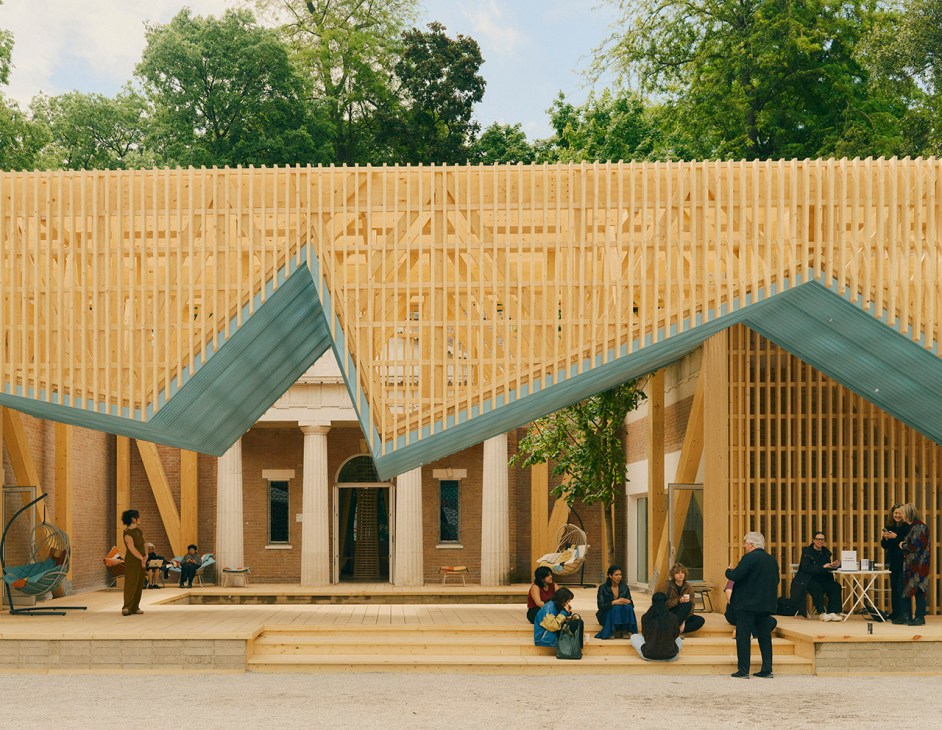
Charlie Hailey, author of The Porch: Meditations at the Edge of Nature, writes that “to think like a porch is to witness and to change our point of view”. This is what the US Pavilion at the 2025 Venice Biennale does with Porch: An Architecture of Generosity. In previous years, the Pavilion hasn’t been as accessible; putting a stoop in front of the building seemed like the obvious answer. As the name suggests, it’s a place for all to enjoy – to find respite and engage with others. Twain – or whoever made the comment – would have approved. It might not change the world but at least it improves the weather.
MacKeith is the lead commissioner for the US Pavilion at the Venice Biennale. He is also the dean and professor of architecture at the Fay Jones School of Architecture and Design, University of Arkansas.
This piece was published in ‘The Monocle Companion: Fifty Ideas on Architecture, Design and Building Better’, which is out now. The fifth title in our Companion series of paperbacks, it’s packed with fresh ideas on design, creativity and the built environment, with a focus on the 2025 Venice Architecture Biennale, which runs until 23 November.
Norman Foster is one of the world’s most celebrated architects. He established his namesake practice, Foster + Partners, in 1967, pioneering high-tech architecture through iconic structures such as Berlin’s Reichstag dome and London’s Gherkin. The Pritzker Prize laureate has redefined skylines globally over the course of five transformative decades of practice. Monocle sits down with Foster in Venice to discuss what the world should be thinking about now.
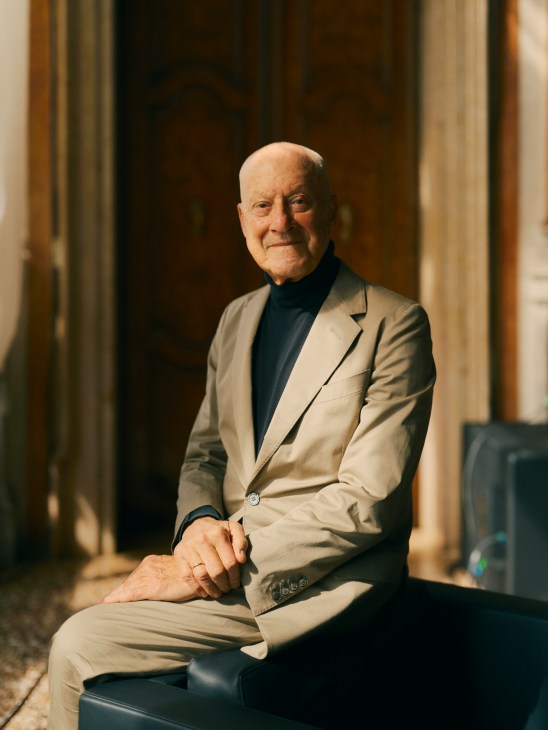
Norman Foster is one of the world’s most celebrated architects. He established his namesake practice, Foster + Partners, in 1967, pioneering high-tech architecture through iconic structures such as Berlin’s Reichstag dome and London’s Gherkin. The Pritzker Prize laureate has redefined skylines globally over the course of five transformative decades of practice. Monocle sits down with Foster in Venice to discuss what the world should be thinking about now.
We’re meeting you in Venice. Why is an event like the Biennale important?
I remember being at a gathering in Aspen, Colorado, and one of the participants was Paul MacCready, who invented a device that tells pilots the best speed to fly a glider depending on conditions. I complimented him on the achievement of his man-powered flight and he wagged his finger and said, ‘What we should be talking about are the people who set the challenge of glider flying, which we have responded to.’ Venice is setting the challenge.
And what is that challenge in Venice?
That nothing happens by accident or chance – everything around us is designed. Things are either designed well or badly. It can be done casually and without too much thought – but it’s still designed. Good design is not about how much you spend, it’s about how wisely you spend it. It all comes down to attitude. It’s important because we know that we can improve the quality of all lives through good design.
Why is quality of life an important consideration for you?
We should be talking about the quality of urban life. Cities are the future and we have to improve the quality of life in them. This is also about our pleasure and enjoyment. It’s also about beauty. All of this relates to everything from architecture and infrastructure to energy. We need to ask if we are going to get a kick out of looking at a countryside completely covered by wind turbines? Are we going to get a kick out of solar panels that have destroyed a meadow?
What are some good infrastructure and energy solutions that ensure quality of life too?
We should think about nuclear. If we come down to data and we take emotion out of it the facts are clear. Depending on the estimate, between seven and 10 million people die every year through invisible, noxious fossil-fuel fumes. A lot of those are kids burning fossil fuel for heating and cooking. As an alternative, you can take a compact nuclear battery and deliver energy that can power an entire Manhattan city block. In doing so, you take out all the dangers of centralising energy. Such an option is still by a huge margin the safest, cleanest, most compact energy solution – and you have total control of the waste from cradle to grave.
You’re in Venice showing a project created in partnership between the Norman Foster Foundation and Porsche. Why was it important for you to establish a foundation?
It’s about bringing the best of academia together with an extraordinary network of world experts on every aspect of urbanity and combining that with hands-on experience in a city that’s now developing into specialities. One example is city science – the use of digital tools to explore the effects of design decisions such as planting more trees and the effects that might have on air quality and both vehicular and pedestrian traffic. We want to pass on knowledge from professionals to those who serve at a political level and at an expert level, while preserving archives for future researchers.
The project with Porsche is a shimmering 37-metre-long bridge on the edge of the Arsenale in Venice. It extends to a floating pontoon on a lagoon that is currently being used as a mooring point for water bikes. What’s the ambition behind this?
We want to show that exploring new forms of mobility can be fun and enjoyable. If you go down there and you get on one of those water bikes and start to pedal across the lagoon, I bet that you’ll find yourself smiling. It’s about asking questions and looking at alternatives. What if this was an alternative mode of transport to a boat in Venice?
What are some of those alternatives for this project?
We can ask lots of questions. What if you can go to the edge of the lagoon and an app calls one for you on demand, and then when you get to your destination there’s a land-based version to take you elsewhere? What if there’s a machine that’s between the conventional automobile and a bike, a machine which can go on a motorway as well as in a walkable neighbourhood? These projects should stimulate thoughts about the future. The future is now. Today is the first day of the future.
Will things be different this time? That’s a question that Argentines have had to ask themselves with disconcerting regularity. Once among the world’s wealthiest nations, the South American country is now better known for its periodic economic crises, of which there have been many over the past 50 years. When the storm clouds clear and the economy starts to pick up steam, its citizens are often left pondering that searching question.
Argentines have grown so accustomed to uncertainty that many store large sums of cash (mostly US dollars) under their mattresses – rainy-day funds for when things take a turn for the worse. Private safety-deposit boxes and jars under the kitchen sink have also proved popular alternatives to banks. Since the election of libertarian Javier Milei as president in 2023, however, the country has become increasingly optimistic about the economy. The unconventional mop-haired leader, who reportedly seeks economic and political counsel from his dogs, has enacted sweeping reforms across everything from fiscal policy and deregulation to privatisation and labour laws. Though it’s still early days, his policies appear to be steering Argentina towards a more stable path. In May, the monthly inflation rate fell below 2 per cent for the first time in five years.
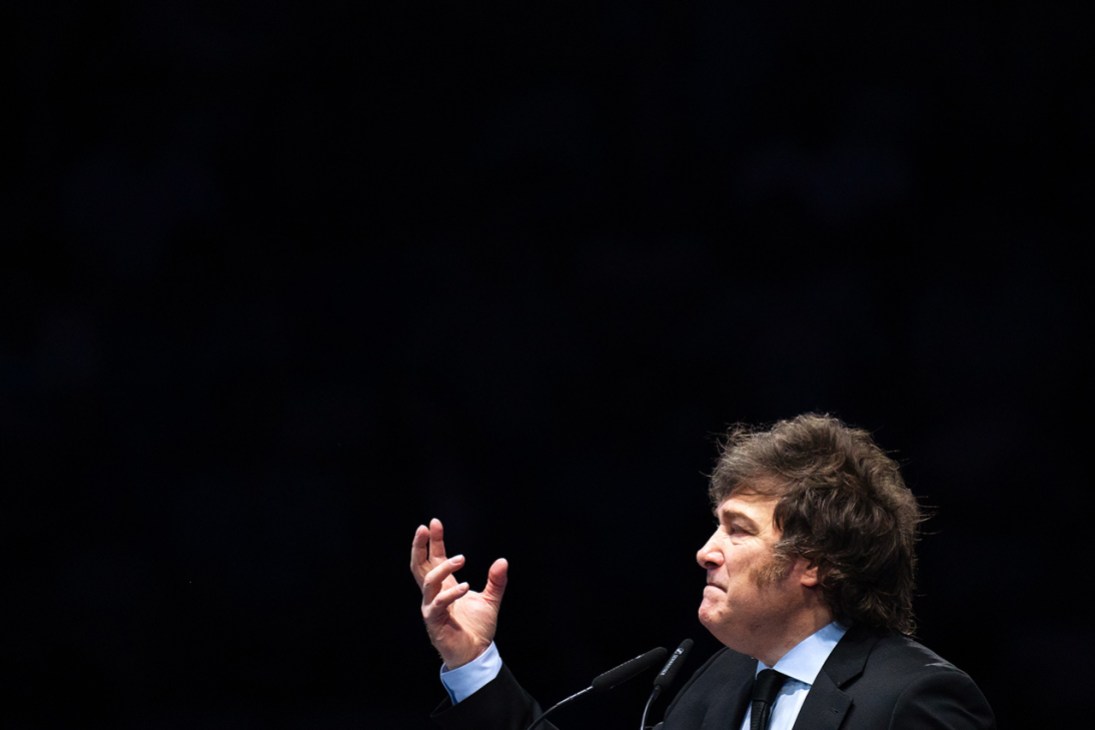
Now, Milei is putting this cautious optimism to the test. Last month the government announced that it would scrap elaborate rules aimed at preventing tax evasion and monitoring personal wealth. The goal? To coax an estimated $270bn (€230bn) of so-called “mattress dollars” back into the economy. Under the president’s scheme – officially dubbed the “Historical Reparation Plan for Argentines’ Savings” – citizens will be able to deposit dollars into bank accounts without fear of penalties or investigations into the source of their wealth. The government has tried to frame the move as part of a broader cultural shift in how it engages with the people. Or, as one lawmaker put it, “There will be no more persecution [of Argentines] as if they were Al Capone.”
The goal of the policy is to remonetise the economy and boost Argentina’s foreign reserves, which remain perilously low. Officials hope that the increased dollar circulation will stabilise the peso and boost fiscal activity. Whether or not the campaign succeeds, however, depends on whether Argentines can trust a banking system that has burned them many times before. The “mattress dollars” legislation is currently winding its way through Congress. Next up are legislative elections scheduled for October. If voters signal their satisfaction with Milei and hand his right-wing coalition a thumping victory, the stage will be set for deeper reforms. Crucially, the average Argentine might sleep better at night knowing that their cash is safely stowed away in a bank and not hidden under their bed.
Harris is a Monocle contributor based in São Paulo. For more opinion, analysis and insight, subscribe to Monocle today.
Buckle up, pens at the ready, tighten those laces and stay alert. The Faster Lane has spent the past week crisscrossing cities, dashing over nations and jumping the Atlantic. We start on the small, secluded terrace at the back of our HQ in Zürich, coffee in hand and opposite a man with a set of plans.
Build it better
My friend Todd is on a mini tour of Europe and is fresh from Copenhagen’s 3 Days of Design fair. We haven’t caught up in a while and there’s much ground to cover – new government in Canada, the joys of licensing your designs and collecting cheques and how Switzerland endures as a sanctuary of civility in a generally bananas world. On our second coffee order Todd explains that he’s about to start building a new house on Vancouver Island and pulls out some plans and a host of references from the late 1950s and 1960s. We scroll through black-and-white layouts and hand-drawn renders that were part of Canada’s post-war masterplan to create more housing in cities coast to coast. With nods to Richard Neutra, Rudolph Schindler and Charlotte Perriand, it was not only a mini masterclass in Canadian modernism but also a hopeful session that could serve as fresh inspiration for a country that needs to figure out a new housing strategy. After a while we got to Todd’s own plan – all low-slung lines, local timber, concrete blocks and forest views. The Carney government needn’t spend big on figuring out new typologies, it need only dig deep in the archives and unearth some exceptional designs that could make for desirable communities from Victoria to Halifax.
Superb San Sebastián
Depending on which index you consult, San Sebastián frequently ranks as Spain’s most liveable city and it only takes a day and an eve to figure out why it works. While the beaches and promenades are surely a plus, the winning ingredient is the city’s scale – a tight grid of six-to-seven storey buildings, galerías, plenty of trees and just the right mix of pedestrianisation and busy thoroughfares. As for real proof that it’s well and truly liveable, stand back and observe the locals. I don’t think I’ve ever seen a city with more mobility-constrained seniors out and about. From daughters walking their fathers to the markets and grannies with canes to dapper gents in wheelchairs and well-coiffed ladies with walkers, Sunday in San Sebastián was a parade of elderly residents enjoying the rhythm of a city with plenty of places to sip a beer in the shade or eat a pintxo or two in a buzzy bar. From what I could determine, this segment of Spain’s silver society still live in the city centre, have all the services that they require at street-level and judging by the general sense of conviviality and groups of women in their eighties chattering away in restaurants well into the evening, the Basque city offers more than a few clues about how we can keep older generations entertained, stimulated and living life to its fullest.
Licence revoked
I am starting a global campaign to close down all hotels that continue to think that it’s acceptable to put a glass box in the corner of a room and call it a bathroom. While San Sebastián got many things right during my three-day stay, the first hotel that I checked into was perhaps the worst example to date of a room not fit for double occupancy. Why? Why? Why would you want to have a barely opaque wall, a swinging door and all-hard surfaces right beside your pillow? Judging by the shiftwork in the breakfast room with one partner munching on their manchego while the other was back upstairs doing their business, no one is interested in this concept and it must stop. If hotels are so proud of this feature then they should celebrate it on their website and not hide the fact that they don’t believe in proper doors and the preservation of privacy. Smart cities should revoke licences or halt planning permission for hotels that don’t offer dignified digs for doing your thing.
Better setup
Should you make your way to San Sebastián, I can highly recommend the Hotel Arbaso in the city centre. This was the refuge I fled to. First, they have excellent bathrooms. Second, Narru restaurant is a treat. Third, top marks for uniforms and sunny, informed staff.
All in the details
Post-San Sebastián I jumped across the border to Biarritz for the film festival and saw Richard Linklater’s Nouvelle Vague on opening night. The film is about the making of Jean-Luc Godard’s Breathless and is a fun romp around Paris. The styling and scenes were all convincing until I spotted a UTA DC-10 in the background. The film was supposed to be set in 1960. The DC-10 didn’t go into proper commercial service until the early 1970s. All that said, it was my first time in Biarritz and I must return for longer than a film premiere.
Meanwhile…
Back in Canada, I’m flying from Ottawa to Toronto on an Air Canada Q400. As this is a short flight and the aircraft doesn’t climb that high, you get a good view of Ontario’s urban sprawl. I’m thinking back to my meeting with Todd and the future building plan and hoping that someone might suggest that for every house that goes up they need to plan at least five mature trees to create a canopy around future communities. It’s depressing to see how much construction has been permitted around Toronto with zero consideration for trees.
Happy Canada Day
As I head back across the Atlantic, Canada is gearing up to celebrate its birthday. I’m keen to see how the country marks the occasion off the back of Trump suspending all trade talks on Friday and Canada embarking on its biggest defence push in decades. Can the nation stay on course by continuing to pull together? Or will it stick with a narrative that looks backward, picks at old wounds and spends too much on celebrating differences rather than focusing on the social capital that comes with a strong national identity?
For more observations and adventures in ‘The Faster Lane’, click here.
As heatwaves stretch longer, affecting more people and cities across the world, many centres of human life are becoming increasingly unliveable. More greenery, shade and water would help but these alone aren’t enough. We also need cool spaces where the temperature, noise and light levels allow our bodies to rest. Fortunately, bringing urban temperatures down is a challenge that humanity has faced for millennia and there’s a lot that we can learn from ancestral technologies. For example, ancient Persian structures such as the yakhtchal or badguir offer effective but low-technology design solutions.
A yakhtchal is a vast communal fridge built from porous materials (eggshells, ground plants and even goat hair), designed to hold ice harvested in winter and keep food cool during summer. A badguir is a wind tower that catches hot air, channels it towards cold underground water, then circulates the cooled air back into living spaces: passive air conditioning making use of climate knowledge, materials and physics.
As a designer and artist, I have tried to reinterpret some of this thinking for today. With architect Imma Sierra, I designed a piece called “Pavillon de l’air”, a covered bench in a semicircle with a slanted fabric roof providing shading throughout the day. The roof is coated in beeswax, which allows rainwater to flow down ventilated terracotta walls below, where it’s stored. When heat warms the hollow bricks through which air can flow, the water is released, cooling the structure through evapotranspiration. The properties of the pavilion’s materials bring temperatures down without electricity.
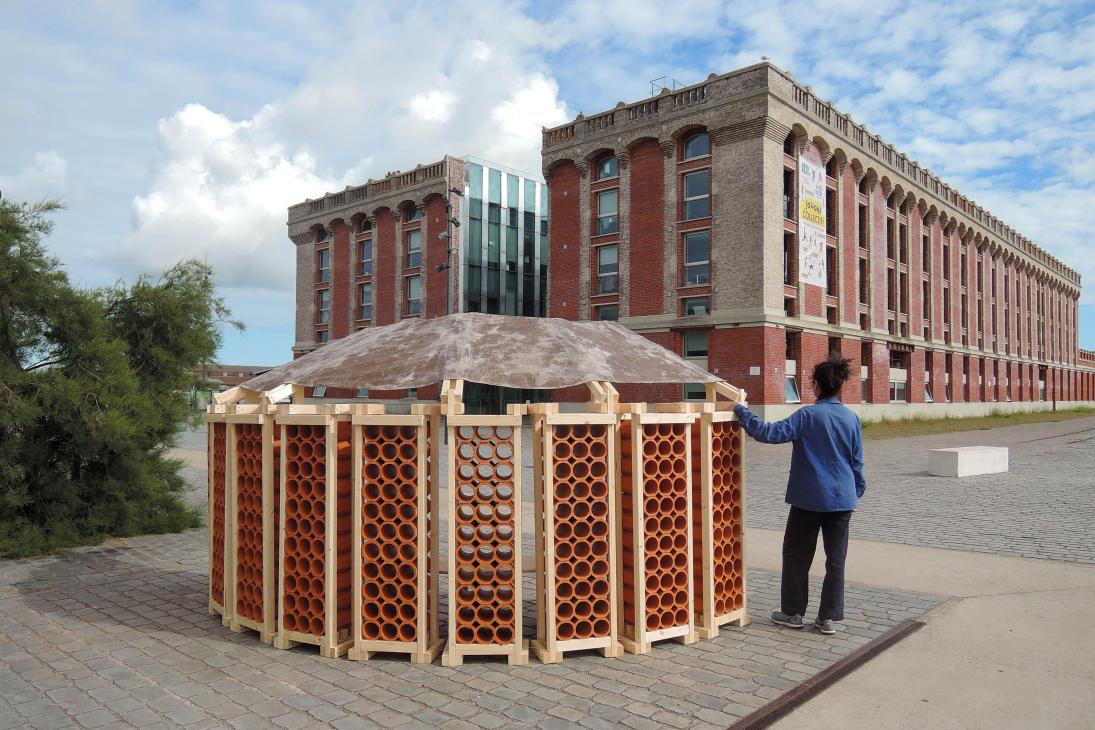
We also need to make more use of underground spaces. Beneath the streets of Paris (topping Monocle’s 2025 liveable cities index), for instance, there are old railway tunnels, underground chambers and more. These places – La Petite Ceinture, the quarries and catacombs – are naturally cool and quiet. We explored these subterranean locations for a project called “14C”, another collaboration with architect Imma Sierra, which we are showing at this year’s Venice Biennale. Though often inaccessible or neglected, such spaces have enormous potential as sanctuaries from extreme heat. By incorporating elements such as natural light, reflective surfaces, plants and art, we could turn them into inviting underground piazzas where people can gather, cool down and reset.
I collaborate a lot with scientists to ensure that my projects are grounded in data. This was how the “14C” project discovered that the temperature beneath Paris stabilises at a depth of 10.84 metres, a fact that could inform the creation of effective and sustainable cooling solutions in the future.
Though I like low-technology solutions, I’m not against innovation (“14C” wouldn’t have been possible without thermal-imaging cameras). Electric cars reduce noise pollution. Ancestral technologies and new ones don’t need to contradict each other. We must combine ancient and cutting-edge design, with a little more attention given to simpler solutions.
We hear a lot about smart cities but those conversations shouldn’t just be about sensors and data. A yakhtchal, a shaded piazza, a quiet underground tunnel that’s open to the public – all of these are smart. Climate resilience can come from new technology but also from making the most of what already exists: the sun, the wind, the materials at hand.
Read next: Monocle’s 2025 Quality of Life Survey: The world’s 10 most liveable cities
About the writer:
Clémence Althabegoïty is a Paris-based designer and visual artist. She is exhibiting her video installation “14C” at the 2025 Venice Biennale. As told to Monocle Paris bureau chief Simon Bouvier.
This essay originally appeared in the fifth installment of Monocle’s Companion series – browse the entire series in our shop.
You can’t deny it – 95 per cent of public art is bad. It’s a shame because it can spark conversation, connect communities and provide inspiration in ways, and on a scale, that a museum or gallery could only dream of. Civic sculpture has always been intertwined with the act of solidifying political, religious and social power. Today, however, it’s mostly a way for local governments and property developers to feign interest in the community in an attempt to spruce up a new development or motorway intersection.
The worst example of municipal art must be the CowParade and its many copycat projects. And you can blame the Swiss for that. In 1998, Zürich-based artistic director Walter Knapp invented the original concept of the cow parade in an exhibition called Land in Sicht (roughly Countryside in View). Since then, similar kinds of fibreglass sculptures have been commissioned to artists to decorate and to deposit in cities around the globe. There are dolphins in Atlanta, owls in Birmingham, dragons in Norwich, cats in the Catskills and lobsters in Nova Scotia. Painted animal statues now populate far too many cities. Some people seem to think that these figures encourage tourism and civic pride. “Buddy Bears”, for example, were created by Austrian sculptor Roman Strobl at the behest of German business couple Klaus and Eva Herlitz. The aim of these animals was to provide “an international symbol of collaboration between nations of what can be achieved when we work together toward a better tomorrow.” They stand across Berlin with their arms outstretched, friendly, optimistic – and truly bad.
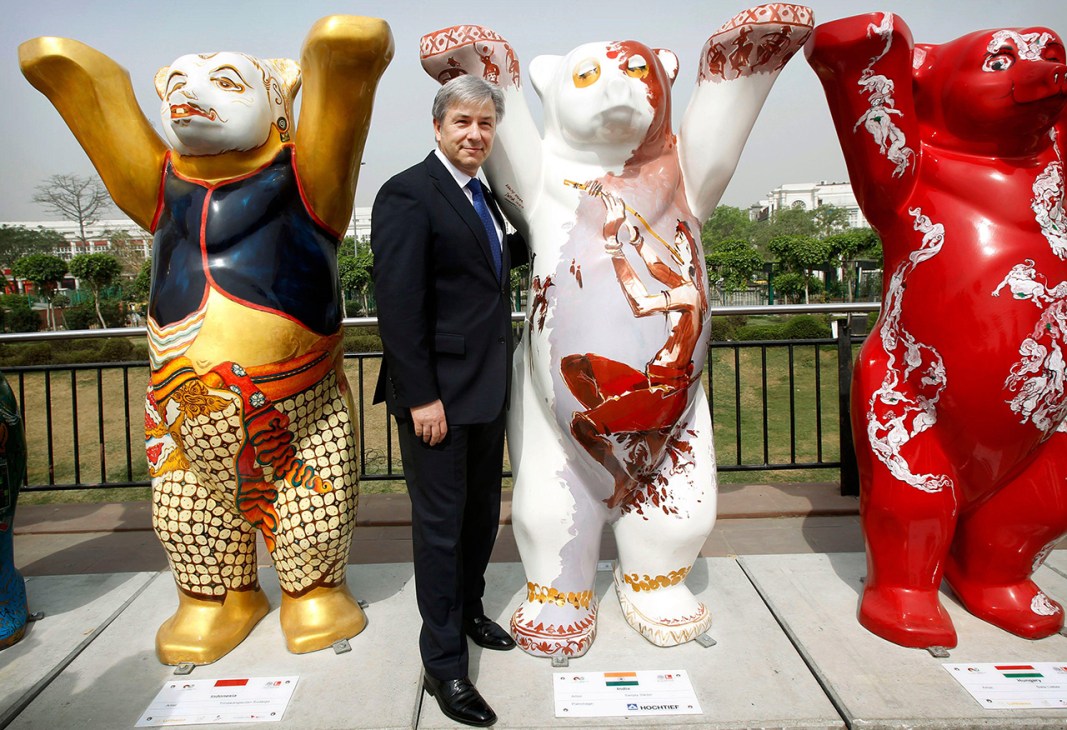
But there are plenty of wonderful, thought-provoking exceptions. Jean Tinguely’s whirling fountain near the Centre Pompidou in Paris; the Barbara Hepworth relief on John Lewis on London’s Oxford Street; David Hammons’ haunting pier-structure “Day’s End” in New York; Paul McCarthy’s delightful Santa with butt plug in Rotterdam and Oslo. Richard Serra, Gelitin, Isamu Noguchi, Ruth Asawa and Daniel Buren have all also created great public artworks. These are works that help a city to define itself. They bring humour, intelligence and beauty to their locations and have the power to lionise communities and transform urban space into a canvas. They make us experience our surroundings in a different way.
Anish Kapoor’s 2006 “Cloud Gate” at Chicago’s Millennium Park was the pinnacle of the big tourist-destination sculptures. A highly polished, 110 tonne curvaceous blob, measuring 20 metres long and 13 metres wide. The zen-like mercurial work is surprisingly joyous to look at in person, the sky reflecting in its ultra-shiny exterior. Even CowParade had a redeeming moment when David Lynch created a headless cow with entrails pouring out of its fibreglass body, etched with the words “EAT MY FEAR” in 2000. It was rejected from the official CowParade by the city of New York but was given a temporary home in Stockholm in 2004.
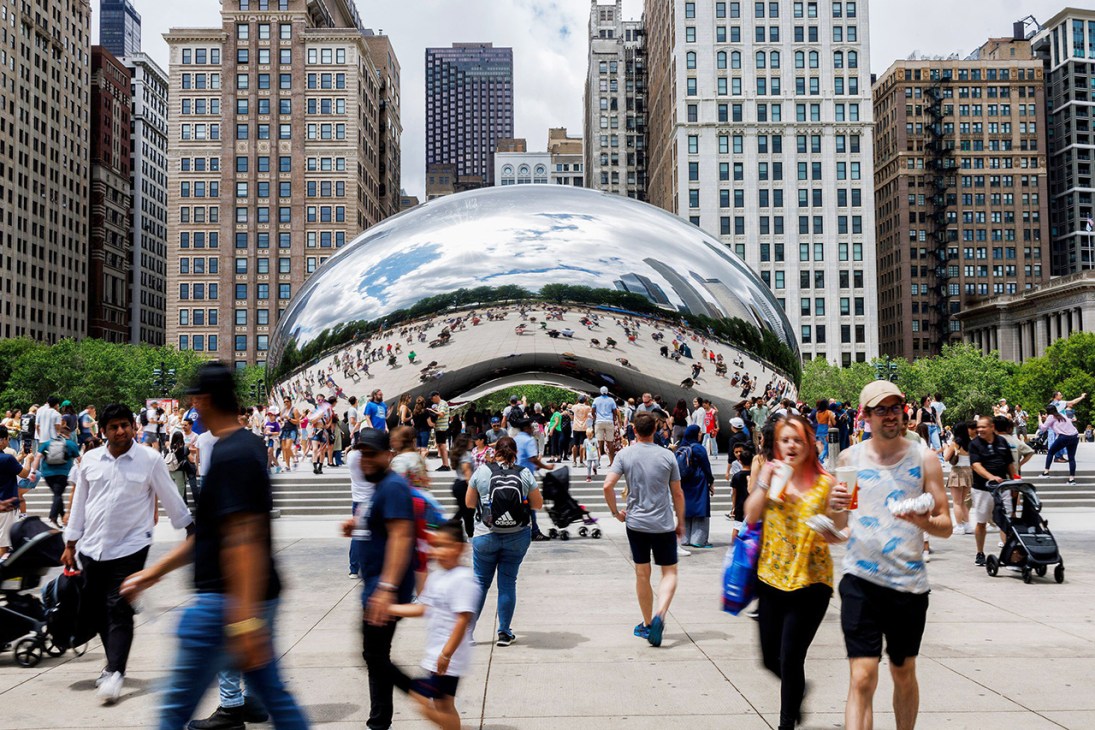
The problem with municipal art often lies in the way that it is commissioned – blandified by committees so it appeals to all. Artwork often reflects the motivation behind its existence and those in charge can be more concerned with their own legacy than commissioning work that resonates with its audience.
Public art can transform a city. But it can only exist when the artist resists power plays and does not seek universal approval. We need pieces that take risks; that work with their environment; and that play with scale, time and material. And, most of all, we need work that celebrates joy.
I had an aunt who never married or had children. There were suitors. Tennis partners that had been around for decades. They would often be at her house when we visited, dashing, and with stories from how they had met during the Second World War. But there were parts of her interior life that nobody was allowed access to. Even my dad, her brother, was always annoyingly ill-informed. But then he wouldn’t have made it on to a list of life’s big sharers.
Myrtle worked in the media. Her job was sending stories by telex, a skill – speedily and accurately dispatching information – that she had learned while working for the Royal Air Force during the war. I always liked being around her. She did her own thing. And one of these things was travel.
While my parents were securing the use of a caravan in Wales or perhaps – hold on to your hats – a cottage in Cornwall, Myrtle was heading to the airport. India, Canada, South Africa; off she would go. And I cheered her on because, as a young boy, I knew that she would bring me a souvenir from her travels. From Canada – I guess I was about eight – she gifted me a piece of varnished bark from a pine tree that had two plastic bears glued to its surface. A vignette from the wilds and clearly the best thing in the world when you’re eight. From India there was a snake charmer’s flute made from reeds and a dried gourd, a carved wooden elephant and a fan made out of peacock feathers (divine but not something that any young lad could use in public).

Myrtle purchased fancier things for herself that would find a place on her sideboard or bookshelves. And there they still were when I was a man, her gentleman callers long gone, and she was sliding into dementia. When the time came to clear her house, I kept her photo albums, filled with pictures from her travels in the late 1940s and 1950s. And I kept some of the souvenirs that had been sitting in the same spots for years. Items that, to the end, I hope, offered her a way to go back to a place and time that had long since receded over the horizon. I now have the white alabaster Shiva from India, a stone mountain goat from Canada, a woven bowl from South Africa. And while my gourd cracked long ago, so to speak, I still have the elephant and a tiny wooden giraffe.
The meander down memory lane this week has been in part promoted by another round of letting go. Neither me nor the other half have any parents left, both had child-free aunts who died (old age, not poisoned for the inheritance) and we’re both prone to sentimentality, so our garage is rammed with boxes containing things that nobody needs but which are hard to throw away. Stuff that just lingers. But this time we’re going for it. This week his aunt’s childhood teddy – bald, blind and with stuffing exiting the seams – has been given away for free to a woman who says that she offers bears a second chance at life. An ornamental decoy swan that belonged to my mother has also flown off to a new home after 16 years in a box. Ebay, Freegle, we’re on it. But those souvenirs from the 1970s and 1980s are going nowhere.
Last week I wrote about my visit to the Abrahamic Family House in Abu Dhabi, about this place that houses a church, synagogue and mosque, and about its spiritual potency. I left out the bit where I went wild in the gift shop that’s run by the design company Fount. It has lots of nice things made in the UAE, including a series of simple wooden animals. I bought the oryx, which is now standing majestically on the kitchen table but might have to bunk up with the elephant in the coming days.
I know that it really makes no sense, forcing a swan and a bald bear to move out one minute, then guiding an antelope into the house the next. But I blame Myrtle. The souvenir is much maligned but, like her, I see in them a way of reaching back to a place and a moment. And perhaps, in my dotage, a way of looking up at a shelf and connecting to a different time.
Spanning 12 palm-leaf volumes of text and illustrations, the Serat Centhini manuscript is one of the treasures of Indonesian literature. Written in the early 19th century under the supervision of the crown prince of Surakarta, it is both a story and an encyclopaedia in which characters wander the island of Java, learning about the world.
Within the pages – alongside advice on Islamic practice, how to have great sex and farming – are detailed instructions for making use of teak trees. The number of branches, the surroundings of the tree, the presence of flowers and animals making their home in its trunk all influence what the wood is best used for, be it a column in a house to bring family harmony, the frame of a mosque to bring calm or a storage chest to bring wealth.
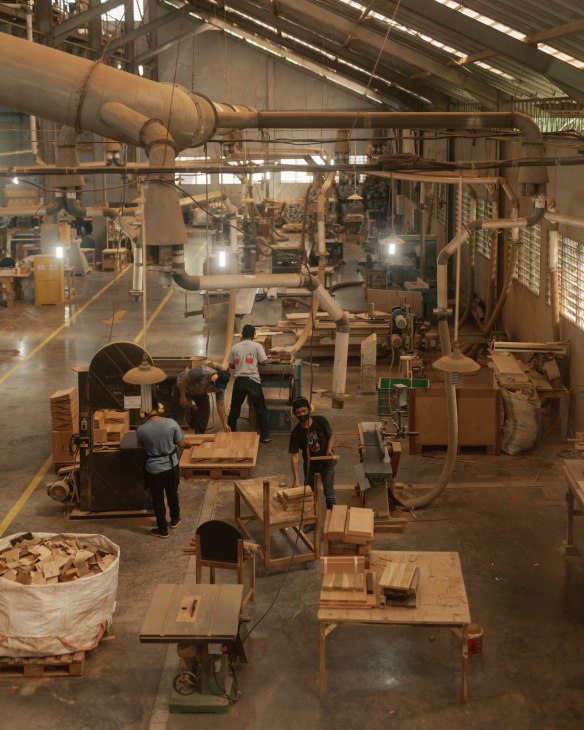
Today Indonesia is one of the world’s biggest teak producers. The timber is renowned for the beauty of its colour and grain, and the natural oil that helps to protect it from termites and the weather. These elements form the core of Philippe Delaisse’s business, Ethnicraft. All of its teak is sourced from responsibly and carefully managed forests. “The way that we win and ensure we’re competitive here is by embracing the raw materials and craftsmanship,” he says.
Enchanted by beautiful teak objects he came across while travelling in Bali in 1995, Delaisse began to export antiques and local crafts, before quickly jumping into production. He started in 1996 in Rembang, East Java, where he found skilled woodworkers willing to work with recycled teak taken from old buildings. “They used very basic tools and a lot of great craftsmen were working barefoot,” says Delaisse. From this emerged a series of beautiful teak cabinets and, piece by piece, the rest of Ethnicraft, the business that he and his business partner, Benoit Loos, have built.Trade wars and the long legacy of the coronavirus pandemic have increasingly pushed companies making products in Asia to explore manufacturing options outside China. But so far, Indonesia has struggled to get a look in: complex trade barriers, tricky labour markets and corruption meant that many companies went elsewhere.

Buffeted by the current trade war, the government is signalling reform. If it is serious, Indonesia has a lot to offer: a large and young labour force, a wealth of natural resources and pockets of deep expertise in various industries and crafts, of which woodworking is one. In a country where the previous president, Joko Widodo, built his fortune selling chairs, sofas and beds to the world, the hope is that others will follow.
Ethnicraft is showing what’s possible. Its main operations hub of some 1,600 workers is in the coastal town of Tegal. The setup here might feature high-precision machines, sturdy safety shoes and modern production lines but the dedication to material and craft remains rooted in tradition. The process always begins with the wood. Ethnicraft buyers scour government-owned teak plantations across Java for the best logs; competition is fierce, with rivals trying to poach the choice specimens. Transported and stacked in the lumber yard, each log is tagged with a QR code with which the company can trace the exact provenance of the tree down to a few metres, ensuring both sustainable sourcing and careful inventory management.

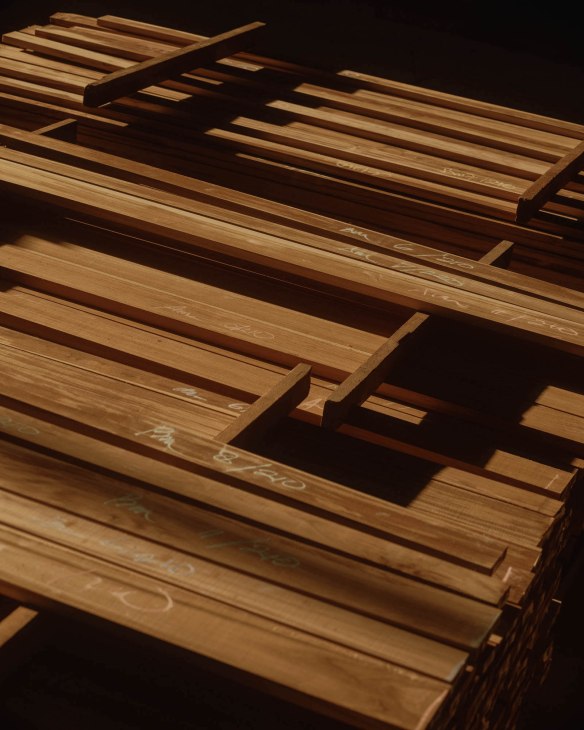
Next the logs need to cure – dry out – until they’re ready to be worked on. With teak, this is traditionally done by simply leaving the fresh lumber out in the sun for about three to four months. Once it is sawn into planks, it then dries for another month before spending a final few weeks in a vast oven. Other woods such as jackfruit and mahogany have their own timelines. The process is painstaking because the products being made demand precision. Wood “breathes”, expanding and contracting fractionally – and planks with different moisture levels will do so in their own ways. For precise work, a moisture difference of more than 1 per cent is unacceptable.
Then comes the craft. A few hundred kilometres away in Jepara, a workshop of about 600 staff produces furniture for some of Europe’s top luxury brands. Along this stretch of northern coast below the slopes of Mount Muria, woodworking skills are particularly sought after.Under a canopy of wooden beams, the process unfolds as the wood moves from turners to carvers and then to woodworkers, before being polished and varnished several times over. In their hands, simple planks, rough to the touch, are turned into exquisite tea boxes, sinuous ornaments and elegant furniture with a texture like heavy silk.
And it is very much hands doing the work. The processes here involve minimal modern technology. While a few high-precision machines have been installed, sheer skill gives the workers an uncanny exactness in their movements. At one bench Marsudi leans over an exquisite panel of wood that will become a luxury chess set. He has worked here for 24 years and the work is in his blood. “My kid also works here as a carpenter,” he says.

This tradition of generational craft is important, says Marsudi. “It helps a lot because of the skill that is needed; we’re working at a scale that is calculated down to the millimetre.” Everyone who enters the workshop must pass a rigorous test. But when such high levels of skill are required, growing up living and breathing wood helps. As we walk away, Marsudi bends over a gameboard that he is shaping. “He’s supposed to be a supervisor,” says Delaisse wryly. “But he just can’t stay away from doing some of the work himself.”
This ingrained culture and the pool of expert labour that it sustains is attracting many brands to manufacture furniture in Indonesia. Despite a rocky few years in the global economy, the furniture industry remains strong. International and local entrepreneurs and businesses alike jostle for production capacity. This includes Giovanni Gallizio, who operates another furniture factory in Jepara, producing to order for clients globally. “The manual dexterity and skill of the people here is outstanding,” he says. “There are few places in the world that have anything similar.”
China and Vietnam have reputations for being more efficient, says Gallizio, and that attracts many producers focusing on the low to middle end of the market. But he thinks that few manufacturers there possess the skills to match the sort of high-end work that can be produced in Indonesia’s teak heartlands. While Jepara is the zenith, skilled workers are present across Java. Back in Tegal, Delaisse’s other factory hums with activity: not just a world of sawdust, glues and varnishes but also one of metalworking, glass staining, stucco spreading and upholstery. “I’ve worked across the world and I’ve never seen a factory like this before,” says Steve Hauters, general factory manager, with a touch of pride.

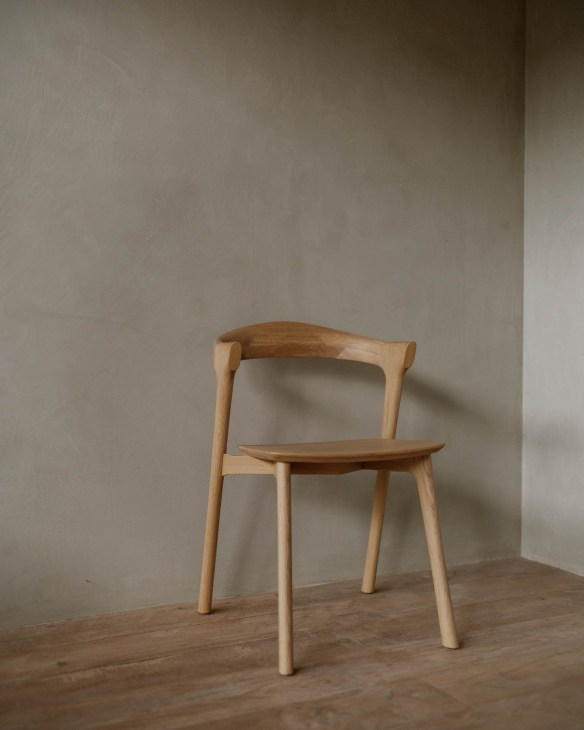
The quest to ensure quality at every stage means that as the product line has evolved – from elegant chairs in plain wood to minimalist modular sofas and elaborately patterned trays – the number of processes performed in house has grown too. From planks to pillowcases to packaging, everything is checked and rechecked at 65 quality-control stations. Such practices fly in the face of much received wisdom about how to do business: in the name of efficiency, the usual advice is to specialise. But Delaisse says that his philosophy is that the product is everything, ahead of concerns about efficiency or marketing. “If you have an interesting product, do not spend too many resources on sales. The world is a very big place. Customers will find you.”
Other companies might come to discover the virtues of doing more in-house too. “I think futurewise, a vertically integrated brand is very valuable,” Delaisse says. Control over the process gives a wealth of data to analyse. And, in a world where fashion trends move fast, it lets companies experiment with greater ease.
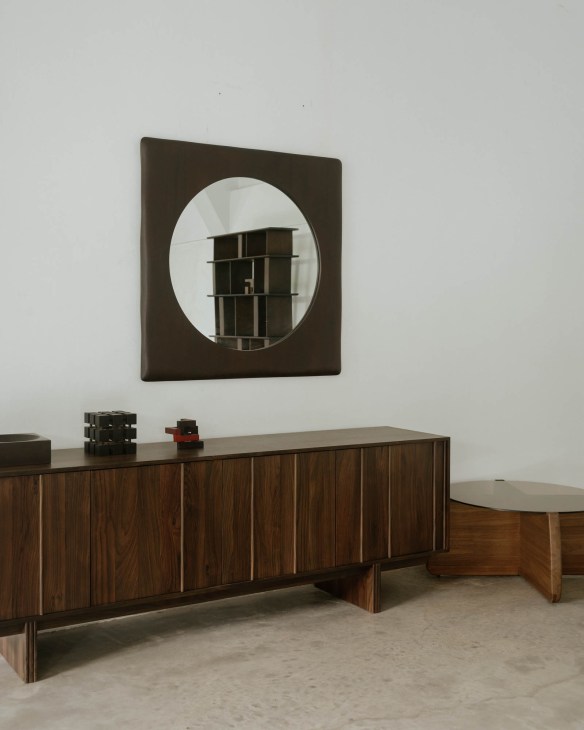
The restless experimentation continues. In Tegal production of a new line of Morpho furniture for the music festival Tomorrowland is taking full advantage of the factory’s ability to combine wood, fabrics and metals in elegant designs. Back in Jepara, the firm has a new factory producing micro-cement. Spread it over foam and fibre glass, and you get a smoothly attractive and deceptively light stone-like slab that’s perfect for tabletops.
Still, the older traditions remain. Decorative woodcarving – one of Java’s most appealing arts that adds grace notes to mundane objects such as doors, window shutters and benches – is seen throughout the Jepara workshop. A coffee table is chiselled with irregular lines that ripple before the eye. Exquisitely patterned cabinets are making a splash in the Chinese market. And a series of elegant one-off pieces, each unique in its design and patterning, waits quietly for the right customer to find them.
This article originally appeared in the Opportunity Edition newspaper 2025, created in collaboration with UBS for its Asian Investment Conference in Hong Kong.
1.
Le Doyenné
Saint-Vrain, Île-de-France
Distance from Paris: 47km
Mode of transport: Car
Time spent travelling: About an hour
Direction: South
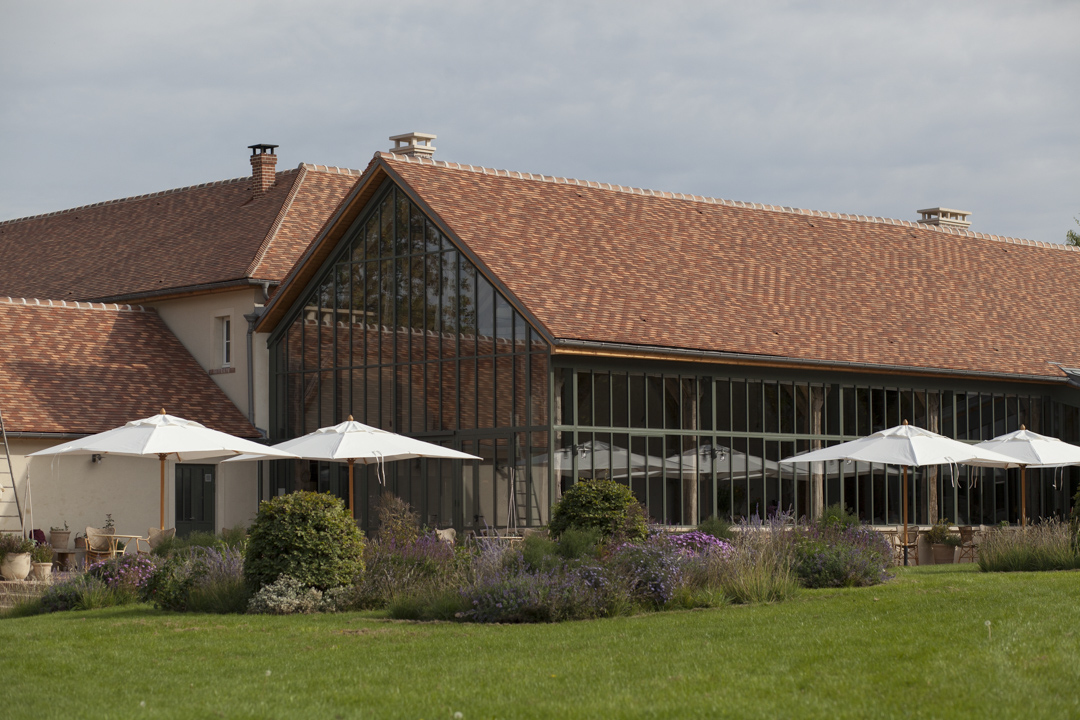
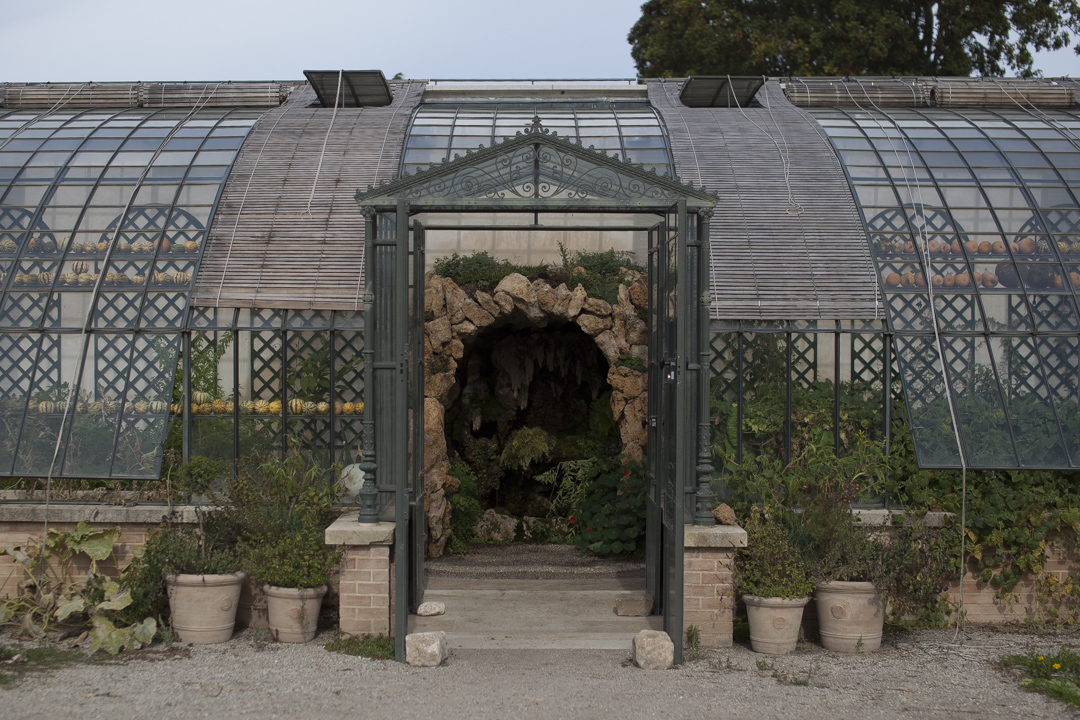
Aussie chefs James Henry and Shaun Kelly made a name for themselves in the restaurants of Paris. But after years in the kitchen, they turned to growing organic vegetables on their farm in Saint-Vrain. Housed in a lovingly restored barn, Le Doyenné opened as a restaurant and guesthouse in 2022 and has had a fine following ever since. Inside the restaurant, glass-paned walls provide views of the garden.
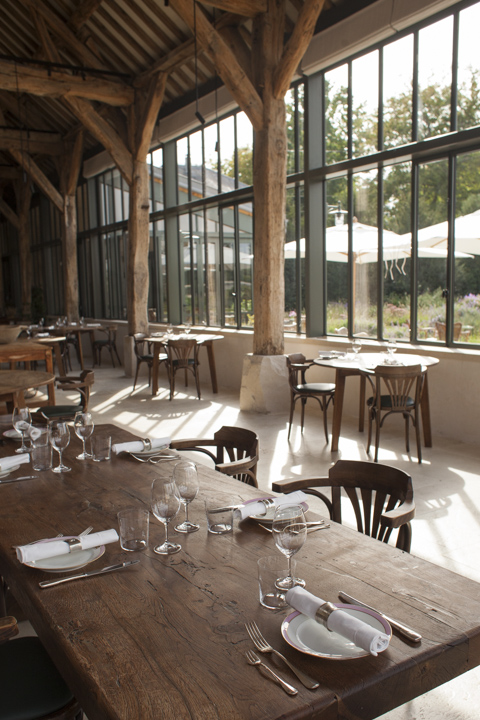

The menus change with the seasons, starring the likes of raw peas in spring and juicy tomatoes in summer. “What works one week won’t work the next,” Henry tells Monocle. “But when we came here our aim was to be self-sufficient and express ourselves.”
ledoyennerestaurant.com
2.
Le Barn
Bonnelles
Distance from Paris: 49km
Mode of transport: Car
Time spent travelling: Less than an hour
Direction: Southwest

The main lobby of Le Barn, a 73-room hotel southwest of Paris, doesn’t have a reception desk or a grand sweeping staircase but rather a wooden shelf, lined with Aigle wellies. The sight sets the scene for a stay at this rural retreat. It is nestled amid a sprawling 200 hectare site, complete with paddocks, a vegetable garden and a pond.
Le Barn opened in 2018 and has become a favourite weekend getaway for Parisians. Guests typically arrive on Friday afternoon in time for goûter or apéro but it’s on Saturday mornings that the place really comes to life. Outdoor yoga classes are held beside the pond and weekend plans are made over breakfast on the verdant terrace.
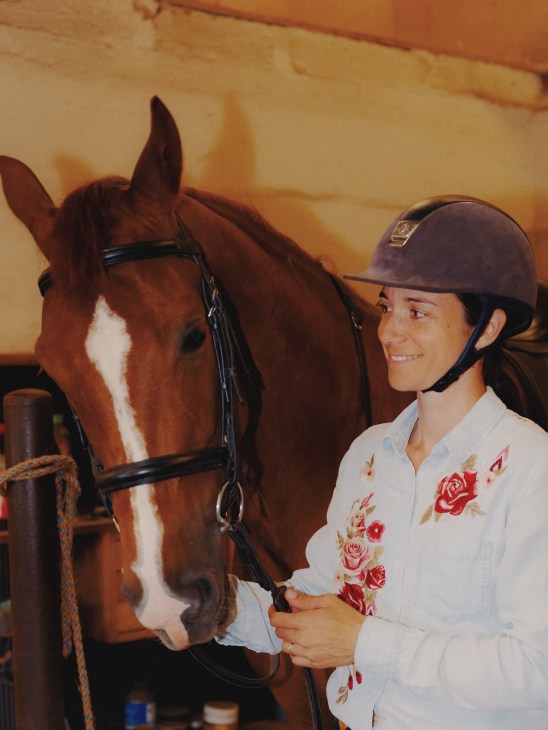
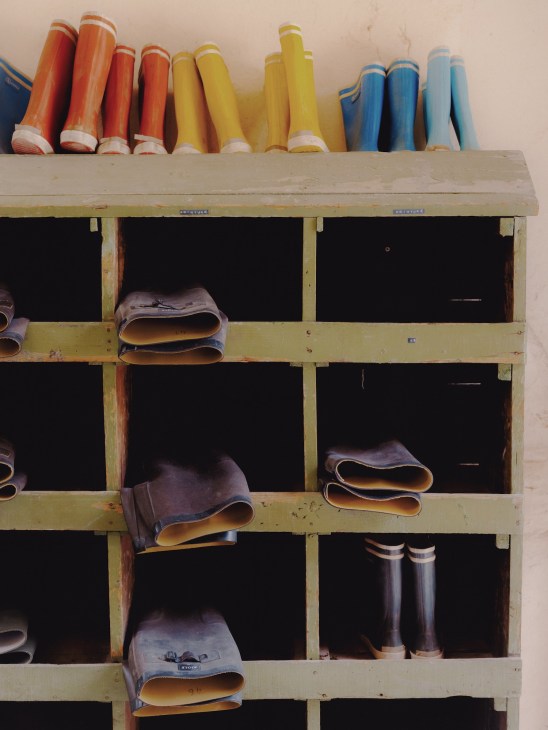
Rather uniquely, the hotel is nestled within Le Haras de la Cense, a distinguished stud farm. Other hotels in the region boast luxurious château settings but this one offers the chance to immerse yourself in nature and get up close and personal with the site’s horses.
“We didn’t want to block off access to the stables or riding arena,” says Franco-American entrepreneur William Kriegel. “The routes are the same for everyone, whether you’re a hotel guest or a student at the Haras de la Cense.”
Kriegel bought the estate in 1980. His decision to expand the stud farm into a hotel came from his desire to offer an innovative hotel concept that was an alternative to the country house, while still offering a closeness to nature.
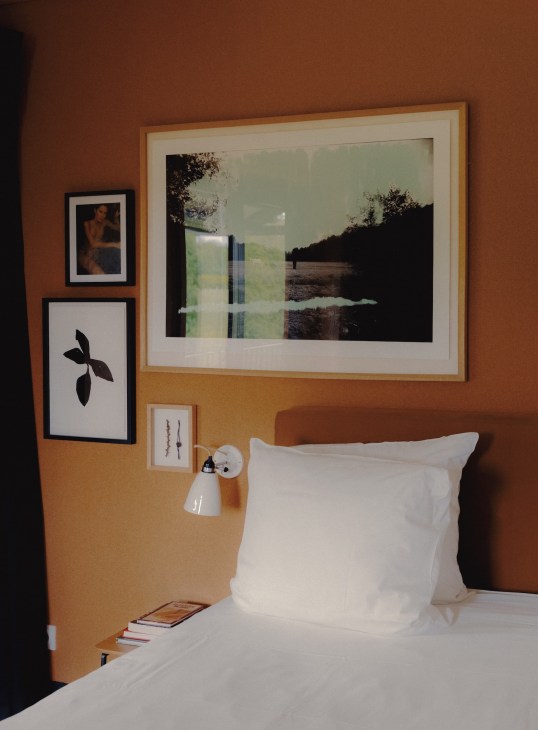
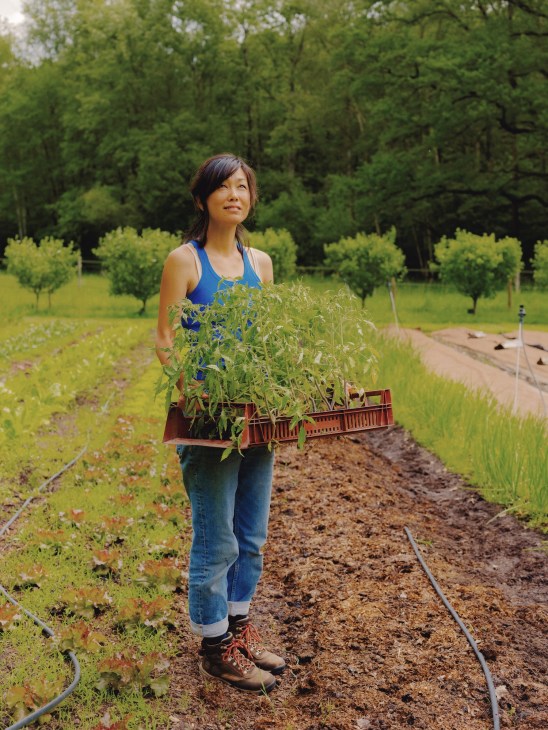
“The aim was to create a place with a countryside feeling,” Kriegel tells Monocle. “I wanted to have simple architecture and use humble materials.” So, he teamed up with Antoine Ricardou of Parisian design agency Saint-Lazare to devise Le Barn’s aesthetic. After an influential research trip to Montana, the look and feel of the hotel took shape. Many of the bedrooms are arranged in two bright-red barn-like structures with walls clad in cork and wood; meanwhile, a custom-built tiled stove warms the lobby. “US ranch culture was a major inspiration but we were conscious of avoiding anything that would look too faux Western,” says Kriegel. And, though guests have the opportunity to book outings on horseback and pony rides for children, the hotel is just as suited for cycling enthusiasts, hikers or those seeking to do very little.
lebarnhotel.com
3.
D’une île
Rémalard
Distance from Paris: 160km
Mode of transport: Car
Time spent travelling: Over two hours
Direction: Southwest, towards the Perche Regional Natural Park.
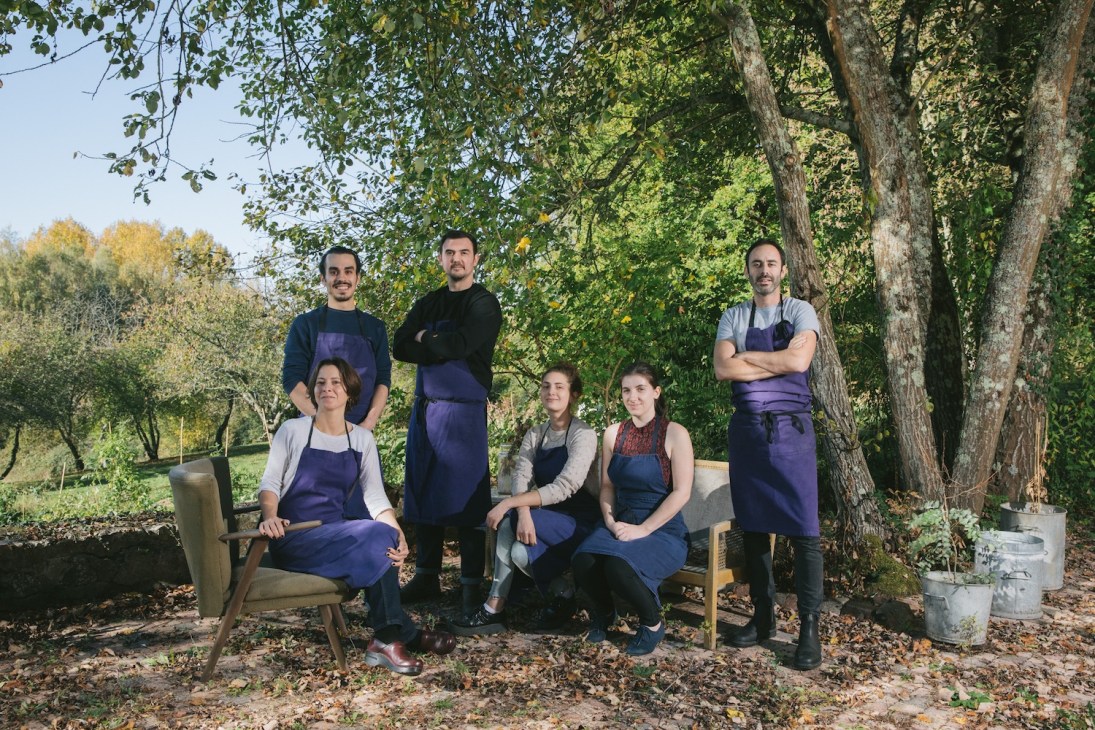
“We have borrowed from the codes of classic hospitality,” says D’une île’s co-owner Théophile Pourriat. “But our vision is more relaxed: we simply host in the way that we like to be hosted.” While a lot of care is put into offering a personalised service, D’une île is doing away with many amenities that are traditionally associated with hotel stays, such as a porter or zippy wi-fi; even mobile phone coverage is unavailable. True to the inn’s rural setting – in the Perche National Park – the 10 guest rooms feature rustic decor that appeals to urban sensibilities but doesn’t clash with the historical facets of the 17th-century former farmhouse.
“We describe D’une île not as a hotel but as our maison de campagne,” says Pourriat. Together with his business partner, Bertrand Grébaut, Pourriat is better known in hospitality circles as the co-founder of Septime, a Michelin-starred restaurant on Paris’s Rue de Charonne. Branching out from drinking and dining wasn’t something that the duo had previously considered. But after staying at D’une île a number of times, they decided to take over in 2018. In Paris they were used to daily changing clientele, here they have more time to finesse the guest experience. Food, of course, is central to D’une île; it’s more a restaurant with rooms than rooms with a restaurant.
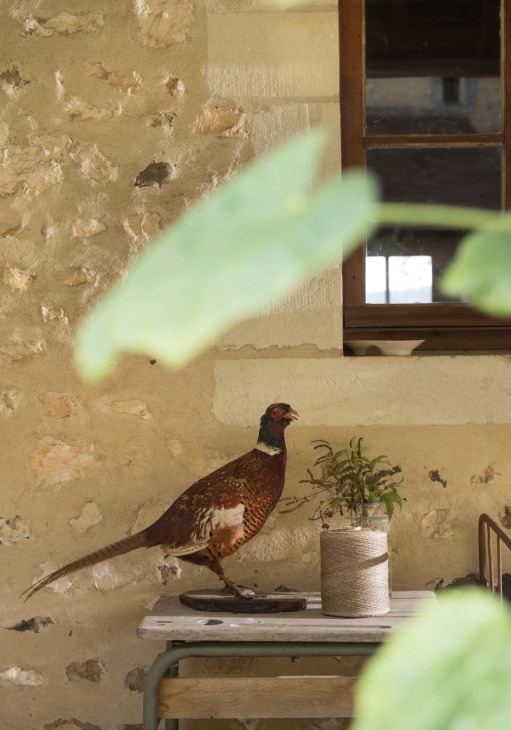
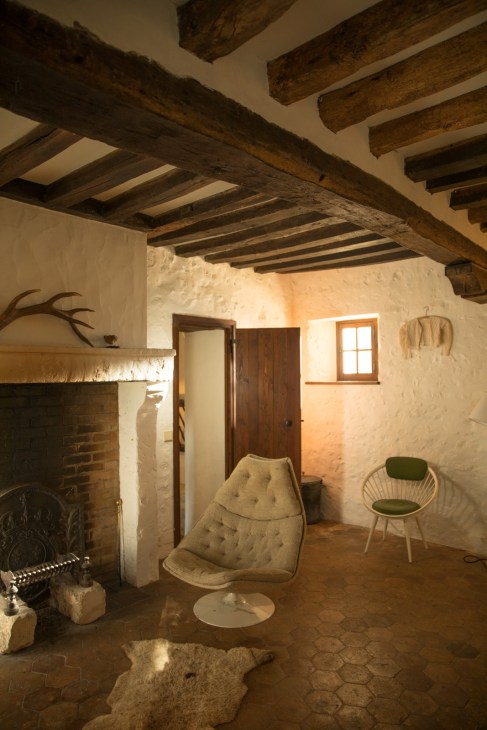
Pourriat and Grébaut put a lot of care into distilling the region into their cooking rather than infusing the countryside with Paris. Running a rural inn means that they can anchor themselves in the community and forge close relationships with producers. In the city, they relied on a network that stretched the length and breadth of France. All of the ingredients on the vegetable-centric menu at D’une île are from local farms and markets. Most of the fruit and vegetables are grown in the on-site garden and the fish comes from the Chausey Islands. Kitchen staples such as olive oil and lemons are replaced by Perche rapeseed oil and vinegar. “Whether the way we do things is the future of hospitality is unclear; there will always be space for palatial hotels where everything is available at all times,” says Pourriat. “But for us, this close-to-nature approach is fundamental to who we are as restaurateurs.”
duneile.com
4.
Tuba Club
Les Goudes, Marseille
Distance from Paris: 786km
Mode of transport: Train
Time spent travelling: Five hours
Direction: Make for Marseille by rail then hop in a cab
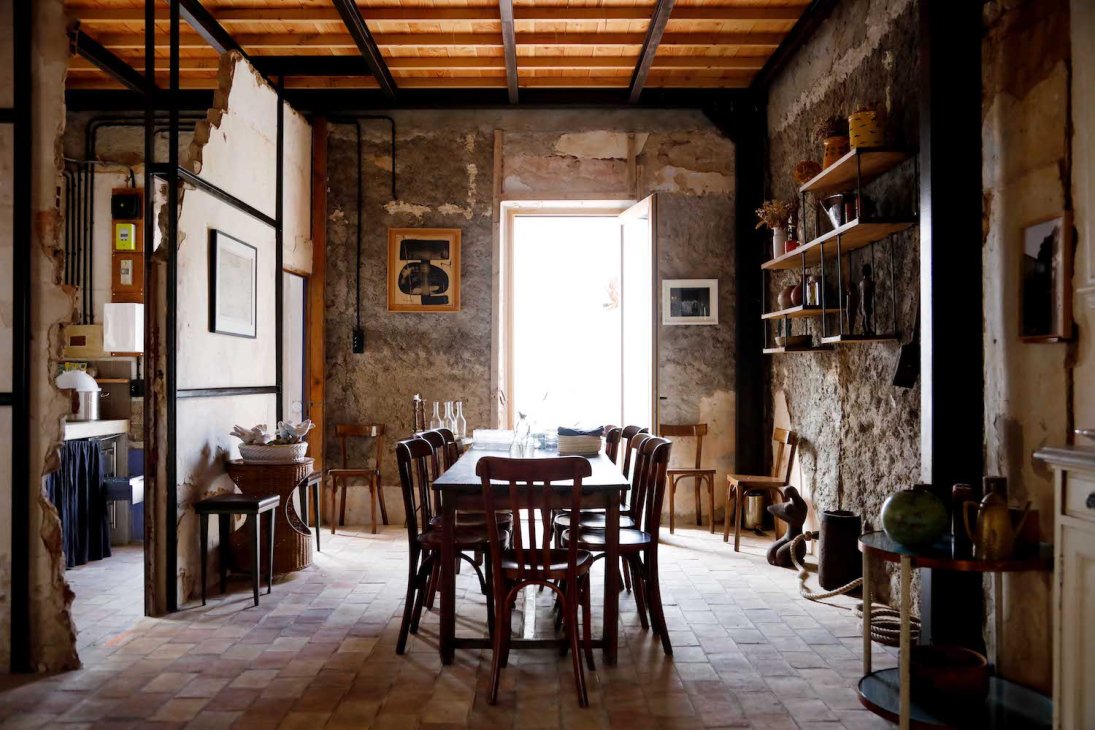
Since opening in 2020, Tuba Club in Les Goudes, a pretty fishing village just south of Marseille proper, has quickly become a summer institution in France’s second city. Founders Greg Gassa, an entrepreneur, and film producer Fabrice Denizot saw the potential of this no-frills former swimming club. They lured a smart, younger crowd to soak up the laidback atmosphere amid dramatic rocks and lemon-andcream-hued loungers. The founders tapped their childhood friend, architect Marion Mailaender, to take the bones of a bathing club and create something to match Marseille’s sultry summer mood. The brief? A friendly space that riffs on Le Corbusier’s wooden cabin at Roquebrune-CapMartin and the fetching bar that neighbours them, L’Étoile de Mer. In 2023, Tuba Club added a new villa to its five fuss-free Cabanon-style huts, providing an ideal platform to dive into resident chef Sylvain Roucayrol’s excellent cookery.
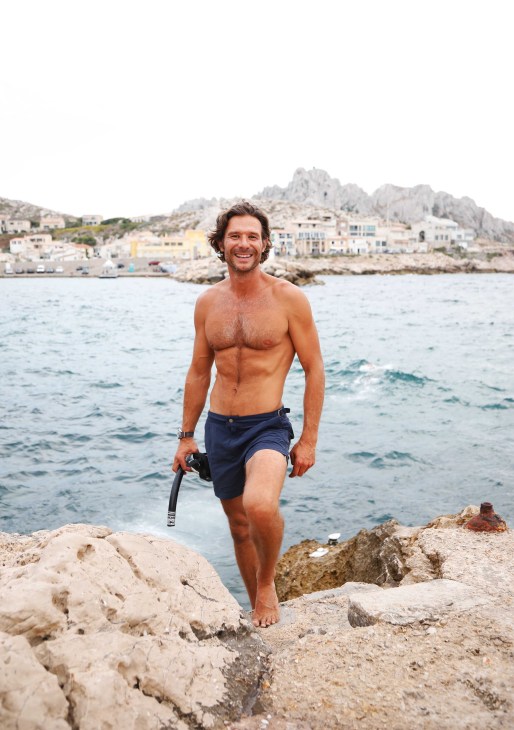
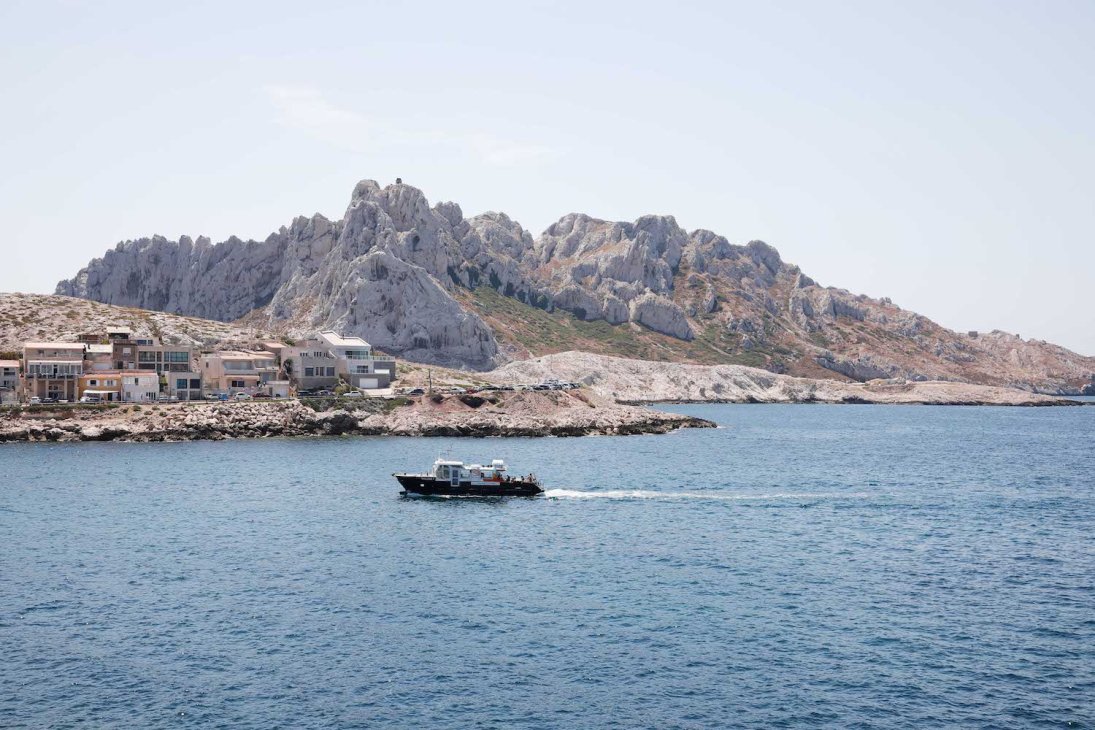
However you look at it, Zohran Mamdani’s victory in the Democratic primary for mayor of New York is a marvel. A 33-year-old state assemblyman with barely four years in office handily defeated Andrew Cuomo, a former three-term governor who was discussed as a formidable presidential contender just five years ago. Cuomo had much of New York’s Democratic party establishment in his corner, while Mamdani had the city’s Democratic Socialists of America chapter in his. Many prominent billionaires, including former mayor Mike Bloomberg, paid for advertisements attacking Mamdani. Cuomo’s allies spent, at last count, $36m (€30.7m) on the race; Mamdani’s just $9m (€7.6m).
How Mamdani managed to pull it off is no mystery. The Uganda-born son of a Columbia University professor and an Oscar-nominated filmmaker monomaniacally focused his message on the ways that the largest US city had become unaffordable for working-class people. Mamdani’s platform consisted of a handful of bold if fanciful policy promises – free buses, a rent freeze, city-run supermarkets – that he said would bring down costs. It was a pitch that Mamdani made in unconventional venues, such as on podcasts with sceptical hosts, alongside a charming social-media campaign that didn’t look like anything else in politics. A 90-second video in which Mamdani interviewed food-truck operators about why they had increased the prices of their meat-and-rice plates – a type of “halalflation” – became an instant classic of the form. The candidate suggested that the problem could be fixed by loosening regulations.

Mamdani turned most of Cuomo’s advantages against him. Backing from big business demonstrated that the former governor had picked the wrong side in a populist conflict. Endorsements from other politicians (including Bill Clinton) became evidence of unimaginative establishment-style thinking; his decades in government were suddenly an albatross around his neck. The contrast between Cuomo – who departed the governor’s mansion amid scandal in 2021 – and the upstart half his age was best captured in a Murray Kempton line that John Lindsay, another young, dashing mayoral candidate, put on his campaign posters in 1965: “He is fresh and everyone else is tired.”
For Democrats beyond New York thrashing about for a new direction after the Biden-Harris debacle of 2024, Mamdani’s success offers plenty to mull over. Should they move further to the left or lean into class-war politics? Perhaps a focus on cost-of-living and pocketbook issues is the way forward? As they seek candidates for 2026 and 2028, should they look past traditional credentials and connections, and instead recruit outsiders unsaddled with the baggage of the party’s previous leaders? Is the most valuable communication skill not the ability to give a speech or navigate a debate but fluency in the language of Tiktok and podcasts?
There is plenty to study and probably only so much that can be learned. If Mamdani ends up beating incumbent Eric Adams in November, the spotlight will not be his alone. The likely winners of the year’s two other big races – for governor of Virginia and New Jersey – will cut a very different profile. And what works in the politics of the Empire City famously does not travel well. There is a reason that it has been more than 150 years since a former New York mayor went on to win another office.
As Democrats dive into localised neighbourhood data in a bid to forensically analyse Mamdani’s unlikely path to victory, they shouldn’t overintellectualise the nature of his appeal. A winning personality goes a long way.
Issenberg is Monocle’s US politics correspondent. For more insights into Mamdani and the New York mayoral race, click here.



